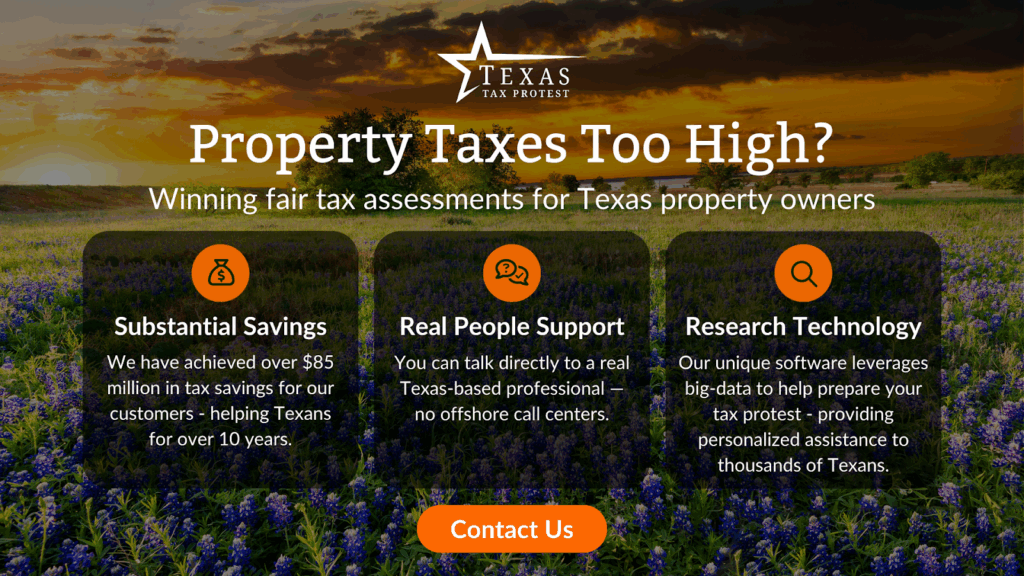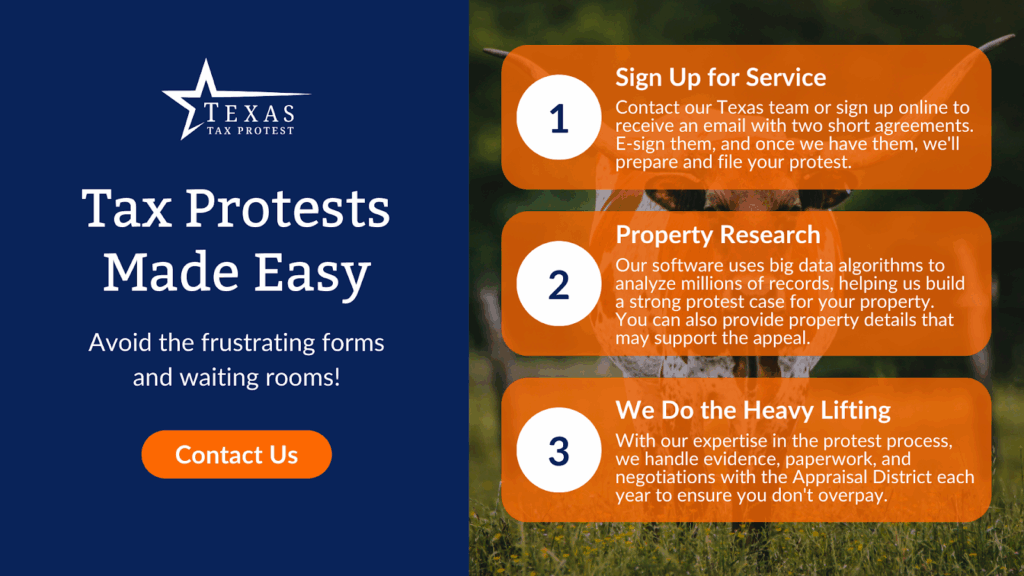
Cost of Living in Austin: Rent, Salaries, and Everyday Expenses
August 9, 2025
Key Takeaways:
- Austin Housing Costs Keep Climbing: With median home prices around $550,000 and property tax rates topping 2%, where you live and how your home is assessed can impact your budget.
- Groceries and Utilities Stay Manageable: Grocery prices in Austin sit roughly 4% below the national average, offering some relief as other expenses continue to climb. Utility costs, including electricity and water, are typically 1% lower than average.
- Transit, Child Care, and Tuition Add Up: Between transportation, child care, and household services, living in Austin requires careful planning. Smart budgeting helps homeowners stay prepared for unexpected costs and rising valuations.
Walk along Austin’s vibrant streets and you’ll see a city bursting with energy shaped as much by live music and BBQ as by the realities of rent, salaries, and rising expenses. In recent years, the cost of living in Austin has become a hot topic for homeowners and business owners. While Austin’s allure brings promise, its charm also raises questions about affordability, fair property valuations, and keeping your household budget in check.
At Texas Tax Protest, we believe in maximizing your savings and simplifying the process. With plain language, professional support, and proven strategies, we help Texans like you face rising costs and navigate property tax assessments.
In this article, we’ll examine the latest cost-of-living figures in Austin and provide you with knowledge and actionable tips to protect your wallet in the Live Music Capital of the World.
Rent Trends and Home Prices Across Austin Neighborhoods
To no surprise, housing is one of the biggest contributors to Austin’s rising cost of living. As more people move and demand continues to climb, the price of both renting and buying a home has outpaced many other Texas cities. On average, Austin’s housing costs are 3% higher than the national average, and that number can swing higher depending on where you live and how much property values have changed in your area.
Renting in Austin: What to Expect
Across Austin, rental prices reflect the city’s rapid growth. In popular neighborhoods like South Congress, East Austin, and Downtown, one-bedroom apartments often start around $1,800. Luxury high-rises, trendy renovations, or central locations push those numbers even higher. More residential pockets like North Loop or Windsor Park were once considered affordable, but recent trends tell a different story.
Two-bedroom units in those areas can reach $1,800 or more per month. Renters across the city are facing tighter inventory, higher demand, and steeper lease renewals. Understanding how rising rents impact long-term affordability is just the beginning for many Austinites. Those same market trends influence the property tax assessments landlords receive and sometimes pass down through rental costs.
Buying in Austin: Home Values by Neighborhood
The homebuying landscape in Austin is diverse, but far from cheap. Median home prices hover around $550,000, with location playing a massive role in what you get for your money. In neighborhoods like Travis Heights, Zilker, or Bouldin Creek, homes can exceed that median quickly, often landing in the mid-$600,000s or higher, depending on upgrades and lot size.
In contrast, far North Austin or areas near Onion Creek may list homes closer to the mid-$400,000s. That said, bidding wars and fast-moving offers are common across the city, which makes local insight and accurate valuation tools even more essential.
Property Taxes in Austin: County Rates and Protest Potential
Property taxes in Austin rank among the most significant recurring costs for homeowners. Since Texas doesn’t collect income tax, local governments rely heavily on property taxes to fund public schools, infrastructure, and city services. In Travis County, which covers most of Austin, the average property tax rate ranges from 2.0% to 2.2% of your home’s assessed value, one of the highest in the state.
That percentage may seem straightforward, but the final amount on your bill depends on where you live and how your property is assessed. Appraisal districts calculate these values based on recent sales in your area, adjusting for factors like square footage, upgrades, or lot size. As home prices rise, assessments often follow, which can increase your yearly tax burden even without significant changes to your home.
For many homeowners, protesting an inflated assessment can lead to meaningful savings. Strong protests use recent, adjusted sales data to challenge overvaluations, and our team is here to help you prepare that evidence. Remember: a successful protest can reduce your home’s taxable value and lower your annual bill without sacrificing services or eligibility for exemptions.

Food Costs in Austin: Groceries, Dining Out, and What to Budget
Austin’s food culture is iconic, but behind the brisket and breakfast tacos lies a practical question: how much does it cost to eat here? Compared to the national average, grocery prices in Austin are 4% lower, but those savings depend heavily on shopping habits, family size, and how often you eat out. Food expenses make up a major part of the monthly budget for many residents.
Grocery Costs: How Much Do Residents Spend?
A single adult in Austin typically spends between $350 and $450 monthly on groceries. That number jumps to around $900 to $1,200 for a family of four, depending on dietary needs and shopping routines. Stores like H-E-B, Costco, and Trader Joe’s offer bulk options and loyalty deals, while neighborhood co-ops and specialty shops often carry higher price tags for organic and locally sourced goods.
Dining Out: From Food Trucks to Fine Dining
Austin’s restaurant scene is built for variety, and eating out here is a treat and a budget decision. Many residents spend between $250 and $400 per month on dining, from $10 lunches at taco trucks to weekend meals downtown that top $60.
For households aiming to save, alternating between home-cooked meals and casual takeout can offer more balance. Meal prepping, limiting delivery app fees, and sticking to local favorites are all ways to enjoy the city’s food scene without overspending.
Utility Costs in Austin: Electricity, Water, and Internet
Daily utility bills can shift more than expected in Austin, especially during peak seasons. On average, utility prices across the city are 1% lower than the national average, but monthly totals vary depending on your home size, location, and seasonal use. While rent and mortgage payments tend to stay fixed, electricity, water, and internet bills often fluctuate.
Electricity: Keeping Up with the Heat
Texas summers are long and hot, which makes electricity one of the most significant monthly variables. Most households in Austin spend between $150 and $200 per month to keep their homes cool. Rates depend on home size, insulation quality, and how frequently you run the A/C. Minor upgrades like weatherstripping, LED lighting, or smart thermostats can help reduce the bill, but provider rates often rise in the summer, so it pays to plan.
Water: Usage Trends and Seasonal Spikes
Water bills tend to be more predictable, though summertime can still bring sharp increases. Sprinkler systems, pools, and outdoor watering habits often push costs higher between May and September. Most residents pay $60 to $100 monthly, though high-efficiency fixtures and drought-conscious landscaping can lower that number over time.
Internet: Fast Connections, Competitive Rates
High-speed internet is a daily necessity in Austin. Depending on speed, provider, and bundling, plans usually range from $50 to $80 per month. While premium fiber options cost more, Austin’s tech-forward reputation means local providers compete for service, which can open up seasonal deals or promotional rates.

Transportation Costs in Austin: Transit, Gas, and Insurance
Commuting in Austin isn’t one-size-fits-all. Some residents rely on public transit, while others are miles behind the wheel. Across the board, transportation costs in Austin are about 5% lower than the national average, though totals vary depending on how often and how far you travel.
Public Transit: Affordable Options with Citywide Reach
Austin’s Capital Metro system keeps fares accessible for local riders. A bus ride costs $1.25, while monthly passes currently run $41.25. The city’s MetroRail offers higher rates for longer distances, but many commuters choose it to avoid high parking fees downtown or skip traffic-heavy routes during rush hour. While service isn’t available in every neighborhood, the system provides a budget-friendly alternative for those with predictable commutes.
Gas Prices: A Moving Target
Drivers in Austin usually pay less per gallon than the national average. Prices still fluctuate based on seasonal demand, refinery output, and weather-related disruptions. During the summer, per-gallon costs often rise, adding up fast across longer commutes or errand-heavy weeks. Fuel-efficient vehicles and route planning can help keep costs in check. Bundling errands or using public transit for shorter, repetitive trips can also help.
Auto Insurance: Rate Factors to Watch
Car insurance is another key part of Austin’s transportation budget. Average annual premiums typically fall between $1,200 and $1,400, depending on your driving history, vehicle type, and living location. Rates in Austin tend to land lower than those in Houston or Dallas, though factors like hail claims or neighborhood theft rates can still raise costs.
Keeping a clean driving record and comparing policy options yearly are two of the best ways to avoid overpaying. While insurance isn’t always at the top of my mind, it plays a significant role in the complete picture of local living costs.
Family Costs in Austin: Child Care, Schooling, and Tuition
Starting a family in Austin comes with major lifestyle perks and new monthly expenses. Child care and education become two of the largest recurring costs for many households. While Austin offers a mix of early learning centers, schools, and universities, affordability varies widely depending on one’s stage of life and choice of path.
Daycare and Preschool: Early Education Costs
Full-time daycare in Austin ranges from $1,100 to $1,800 per month at licensed centers. Home-based providers may offer lower prices, but spots fill quickly, especially in neighborhoods close to major employers or transit corridors.
Likewise, private preschool programs typically start around $800 monthly, and rates climb based on class size, amenities, and curriculum. Some public school districts offer free or reduced-cost pre-K, though eligibility depends on income and availability.
K–12 Schooling: Public, Charter, and Private Options
Austin families can choose from public, charter, or private schools. Public and charter options are tuition-free for residents, with charter programs sometimes requiring applications or lottery-based selection.
Private school tuition in the city usually starts around $9,000 per year for elementary levels. High-demand or specialty institutions can exceed $20,000 annually, particularly if they offer niche programming or competitive extracurriculars. Families moving to Austin often factor school zoning into their home search, since proximity to well-rated schools can impact educational outcomes and property values.
Higher Education: Local Tuition Breakdown
The University of Texas at Austin charges around $11,000 annually for in-state undergraduates. Out-of-state tuition climbs considerably, making residency an essential factor for long-term planning. For parents and students exploring college options, applying early and researching financial aid packages can create more flexibility in cost and campus choice.

Final Thoughts
Living in Austin comes with plenty of tradeoffs. The job market is strong, and the lifestyle keeps you close to live music, green space, and good food. At the same time, rising costs, from rent and utilities to grocery bills and property taxes, can put pressure on your monthly budget.
Luckily, our team at Texas Tax Protest helps homeowners make sense of those yearly assessments. We combine local knowledge with data-driven tools to review your valuation, identify qualifying exemptions, and build a strong case if a protest is needed. In a fast-moving market like Austin, staying informed and proactive can keep more of your money where it matters.
Read more:
- Is It Possible to Avoid Property Taxes? States to Consider
- Seasonal Home Maintenance Checklist: What to Do Each Quarter
- Moving to Texas? Here’s What You Should Budget For
Frequently Asked Questions About the Cost of Living in Austin
What salary is considered livable in Austin?
A single adult typically needs a salary between $60,000 and $70,000 annually to cover rent, utilities, groceries, transportation, and other daily expenses. That number rises if you’re supporting a family or managing student debt. With rising costs and high property tax bills, many Austin homeowners seek ways to stretch their income further over time.
How high are healthcare expenses in Austin?
Healthcare costs in Austin are similar to those in other major Texas cities. Monthly premiums for a single person often fall between $300 and $600, depending on your plan and employer coverage. Doctor visits, dental care, and prescriptions add to overall out-of-pocket expenses, so it helps to plan during open enrollment.
Is public transportation affordable in Austin?
Yes, CapMetro keeps fares low. A local bus ride costs $1.25, and unlimited monthly passes are $41. Many commuters use the rail line for longer distances. While public transit works well for specific neighborhoods, most households still rely on a personal car for day-to-day travel.
What are the average internet and mobile phone costs in Austin?
Depending on provider and bandwidth, high-speed internet plans generally range from $50 to $85 per month. Based on data needs and coverage, mobile phone service typically costs between $40 and $80 per line. Bundle options are available but vary by zip code.
How is the entertainment and nightlife affordability in Austin?
Austin’s entertainment scene covers every price point. Concert tickets can start around $10, and meals from food trucks or taco stands often fall under $15. Trendy spots on East 6th or Rainey Street come with higher tabs, but casual options are easy to find all over the city.
How much do pet expenses add to living costs in Austin?
Annual pet costs usually land between $700 and $1,200, depending on size, breed, and health needs. That includes vet visits, food, grooming, and basic supplies. Emergency care or boarding adds more, but many locals are happy to make room in the budget for their pets.
Are there affordable neighborhoods in Austin?
While central Austin has grown more expensive, areas like North Austin, Windsor Park, and parts of East Austin continue to offer more approachable price points. First-time buyers often target these communities to access lower home prices and potential tax savings. Our team at Texas Tax Protest helps homeowners review comparable sales and valuation adjustments to avoid overpaying year after year.





